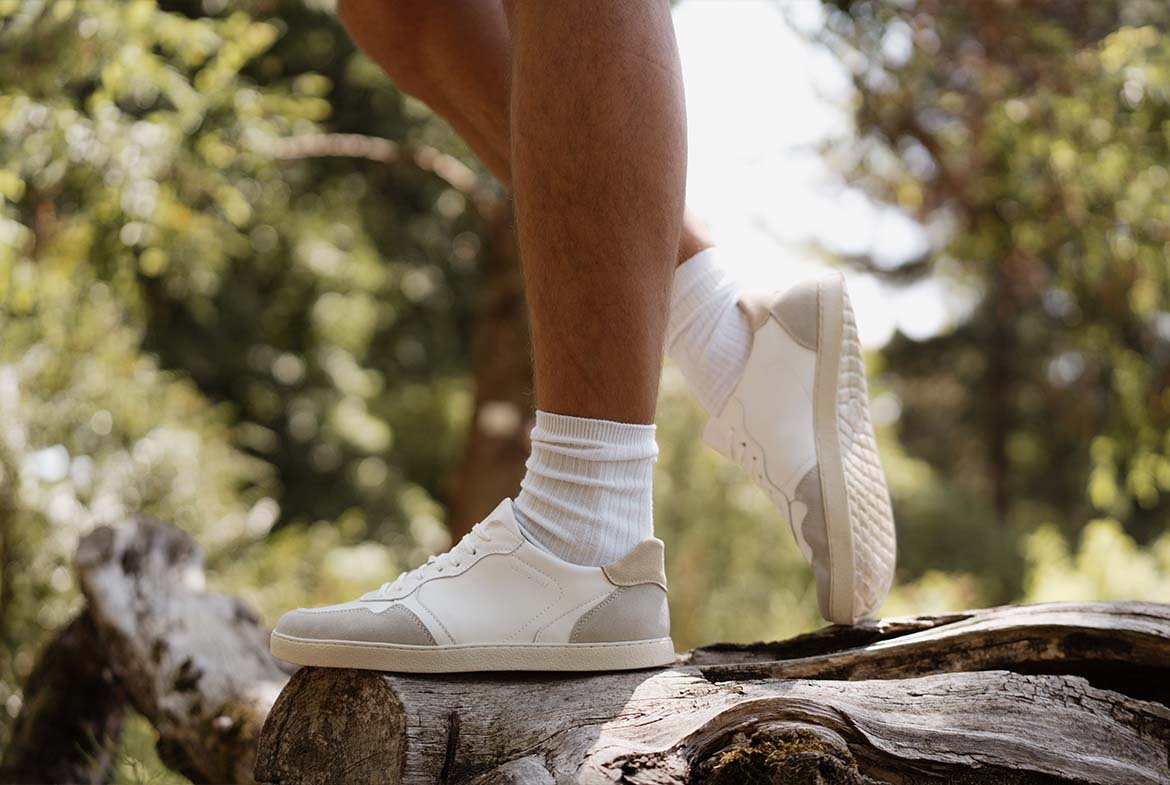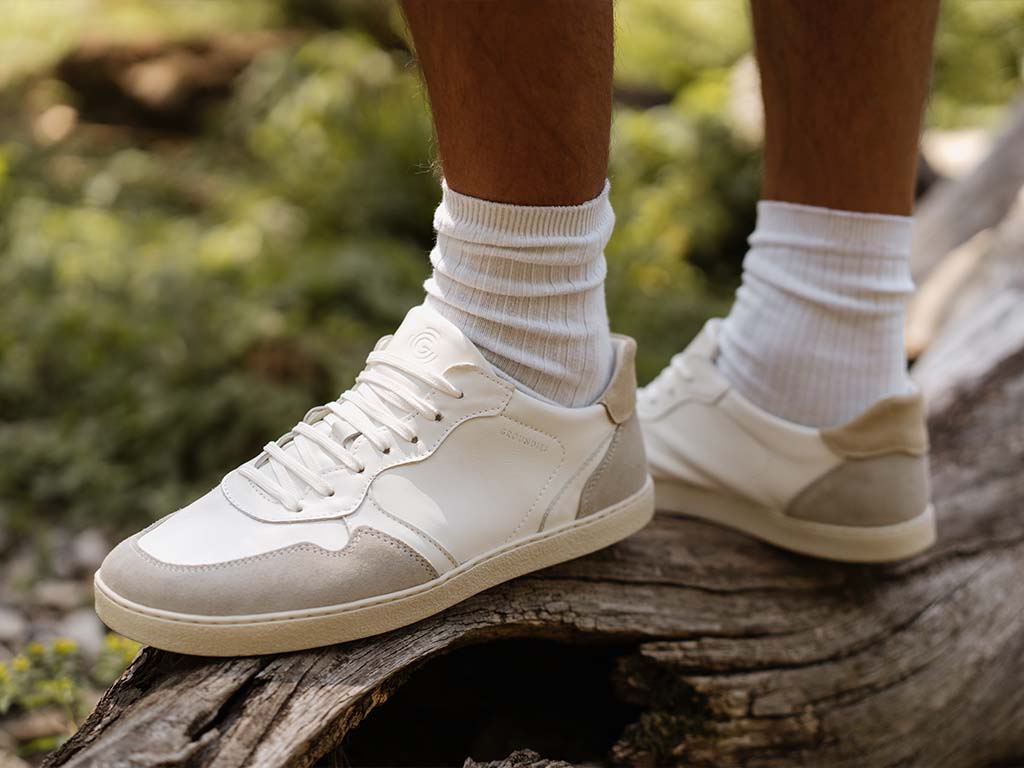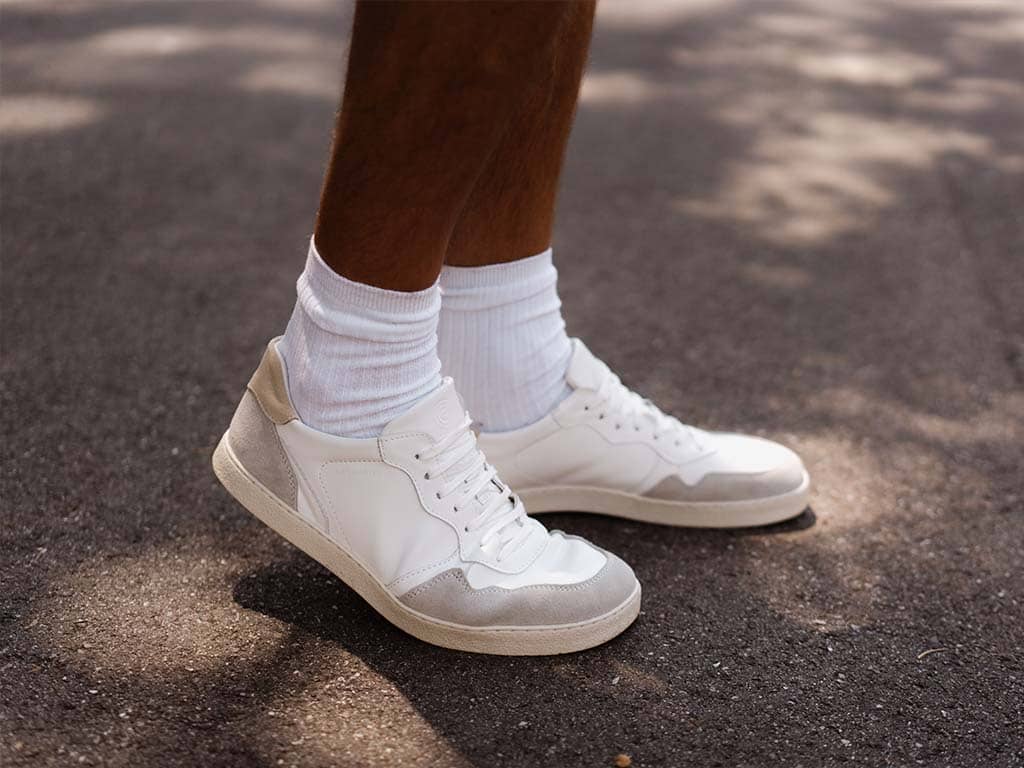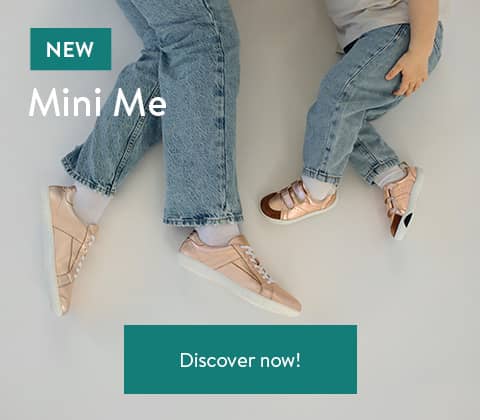How to switch to barefoot shoes

If you've never used barefoot shoes regularly before,
your feet and toes will first need to slowly get used to
the new feeling. Barefoot shoes feel different to 'normal' shoes with padding
and cushioned soles. The muscles in your feet and toes will be used differently to before
and will need to first get used to the new freedom of movement
and new challenges. In order to make your switch pleasant, safe and healthy,
we've put together a few handy tips.
Walk barefoot as often as possible!
Start by going completely barefoot in your free time as much as possible. This can help the muscles, tendons and ligaments which have been weakened by 'normal' shoes slowly get used to walking without support. Walk around your house or apartment only in barefeet or socks. In summer, you can also go barefoot in the garden or at the park. Perfect for holidays: walking barefoot in the sand has a great effect. In general, particularly soft ground is suitable for activating and training your feet without overstraining them.
Start slow!
Now you need to integrate barefoot shoes into your daily routine. Don't rush! In our daily lives we most often come across hard types of ground like asphalt or cobbles. This calls for special attention. It's best to start by wearing your new GROUNDIES® on days where you don't have to walk very far at once. This allows your feet to slowly get used to the new feeling of walking without overstraining them. We recommend frequently switching between your normal shoes and GROUNDIES® in the beginning.

Greater strength and flexibility for your foot
You can also take steps to actively help your feet and toes
become stronger and more flexible. There are various simple exercises for doing so. The great part
is: you can do them almost anywhere. In bed before getting up in the morning, on the
sofa, while brushing your teeth, at your desk, even while wearing (barefoot)
shoes. This makes it simple to integrate foot training into your daily
routine.
Dig your toes
Press your toes together and dig them into the floor as
hard as possible. Hold this for a few seconds before letting go. Repeat
the exercise several times. This exercise works while standing, sitting and lying down.
Spread your toes
Try to spread your toes as wide as possible,
leaving a gap between each toe. You can also use your hands
to spread your toes apart.
Lift your toes individually
Place both feet on the floor and try to lift each
toe individually. You'll notice that it's not so easy.
Walk on the outside and inside edge
Stand with both feet straight and shift
your weight to the outside edge of your feet. Hold this position for
a moment. Then try to walk on the outside edge of your feet. Then try
to stand and walk on the inside edge of your feet. This exercise can help you
to train you balance and spread weight evenly across your
feet.
Lifting your heels
Stand in a straight and stable position and lift
both heels from the ground. Try to raise them as high as possible
and hold this position. You can then try this exercise on one
leg. This trains your ankle joint and balance.


Listen to your body!
If you approach the switch to barefoot shoes
slowly, you'll gradually get a feel for which
speed works for your feet and your body as a whole. Try deliberately testing
your new GROUNDIES® barefoot shoes on different types of ground
and compare them. How does your foot feel? A little muscle soreness is totally normal in the
beginning. It shows that your feet and calves are working and adapting to their
new tasks. If it's too much for you, take a break. The important thing
is that you feel good and listen to what your body is telling you.












